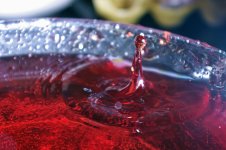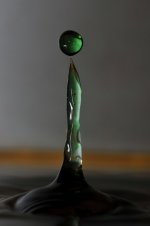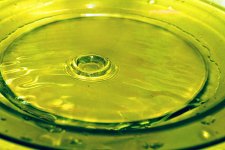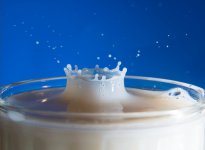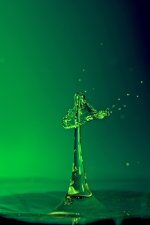People do photograph water drop splashes with just the camera, but the timing requires much persistence and trial and error, and luck. The easiest way is hanging a bag of water with the smallest pin prick in it, to steadily drip every few seconds. Or it could be a small aquarium valve, almost closed to only slightly drip every few seconds.
But... if you use a simple timer, which is triggered by the falling drop, it can trigger the flash at any adjustable time following the trigger, which will give you 100% repeatable results every time, easy as pie, adjustable to occur at any phase of the splash, from the crown, to the rebound, to the separated drop at top of rebound column. Here is an extremely inexpensive timer kit which will work great (which you have to wire yourself, but which is very easy, school kids can do it - or they also offer a wired version):
Speed of flash units for high speed photography
Or (much less trivial to buy), then to photograph collisions of the first drop rebounding, and the second drop falling, then you need a timed water valve and more elaborate timer, to control when the two drops are released (which again, becomes 100% repeatable, every time).
Shako Solenoid Valve for Water Drop Collision Photography

